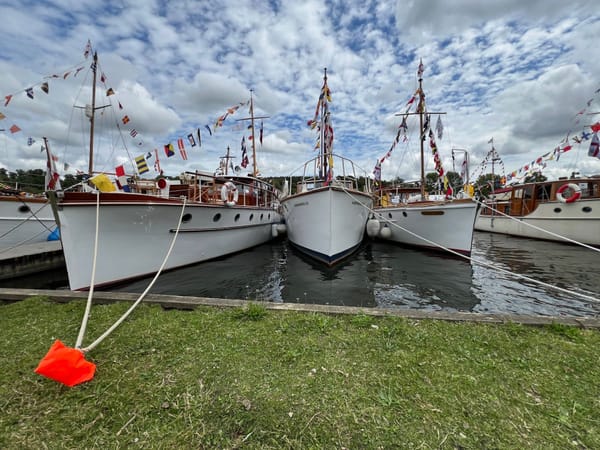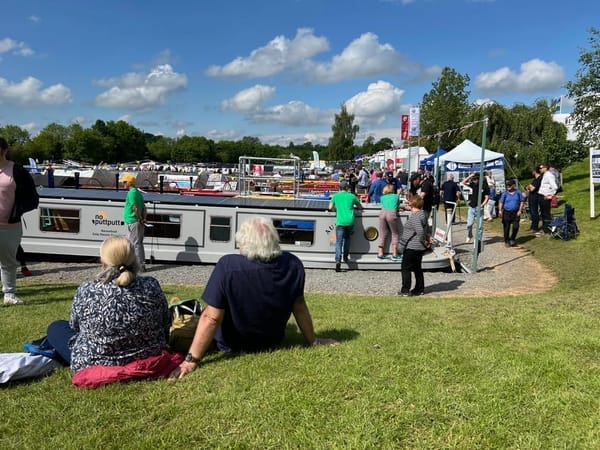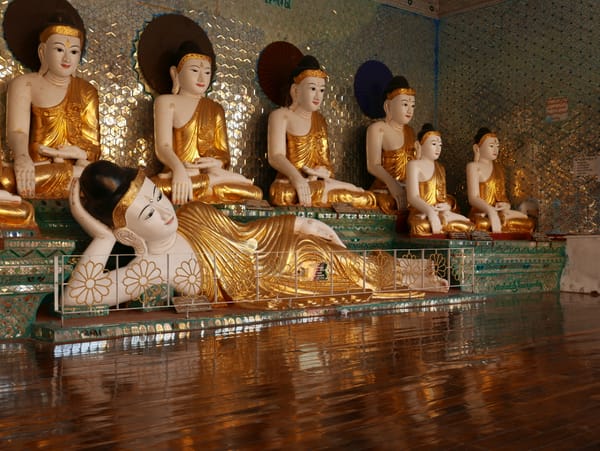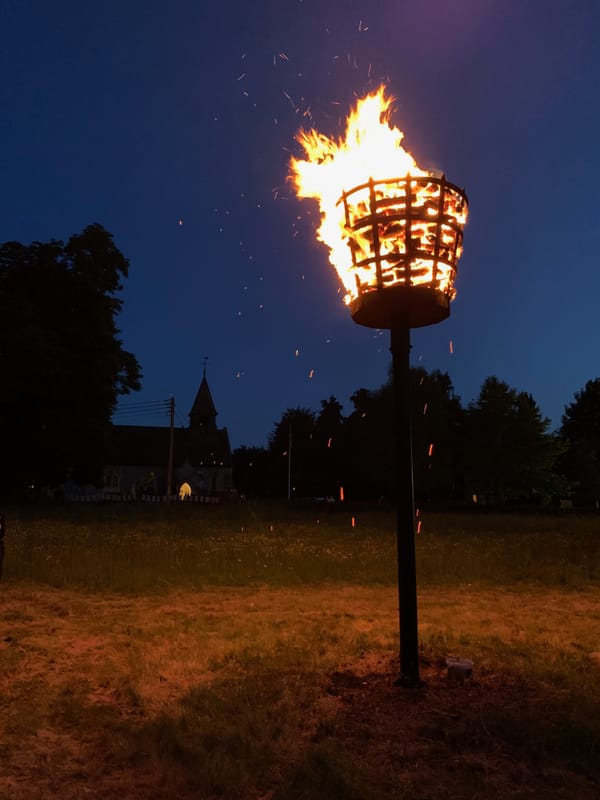Myanmar (Burma) — Finally off to Myanmar, via Kuala Lumpur (KL)
Never stay at the Plaza Premium Lounge
March 2015
Penang International Airport (PEN) — off to Kuala Lumpur (KL)
My next stop after Penang was KL International Airport (KLIA). And at KLIA, I would be spending the night in a 'nap room' before flying to Myanmar (Burma).
Penang International Airport (PEN) was not too bad as airports go. There were plenty of places to eat before security and after. McDonald’s appeared to be offering free Wi-Fi, but I couldn't connect. The airport had a free one-hour Wi-Fi that seemed to work, and I would only recommend using it with a VPN.
Again, the Air Asia check-in process was a mess.
Air Asia check-in — what a shambles! An IT failure?
The Air Asia check-in process at PEN was a bit of a shambles.
I used Air Asia quite a bit at the time to travel around SE Asia. And during March 2015, they brought in a crazy check-in system that didn’t seem to work. I first encountered it a week earlier on a flight to Sibu in Sarawak.
As with most airlines at the time, you could check-in online. You would then get a PDF of your boarding pass or a 2D barcode to scan at the airport. Air Asia did both, and for my flight to KL, I had both (belt and braces after the problems with the Sibu flight the other week).
I didn’t have a printed copy of the boarding pass, as I didn’t have a printer with me (who travels with a printer?).
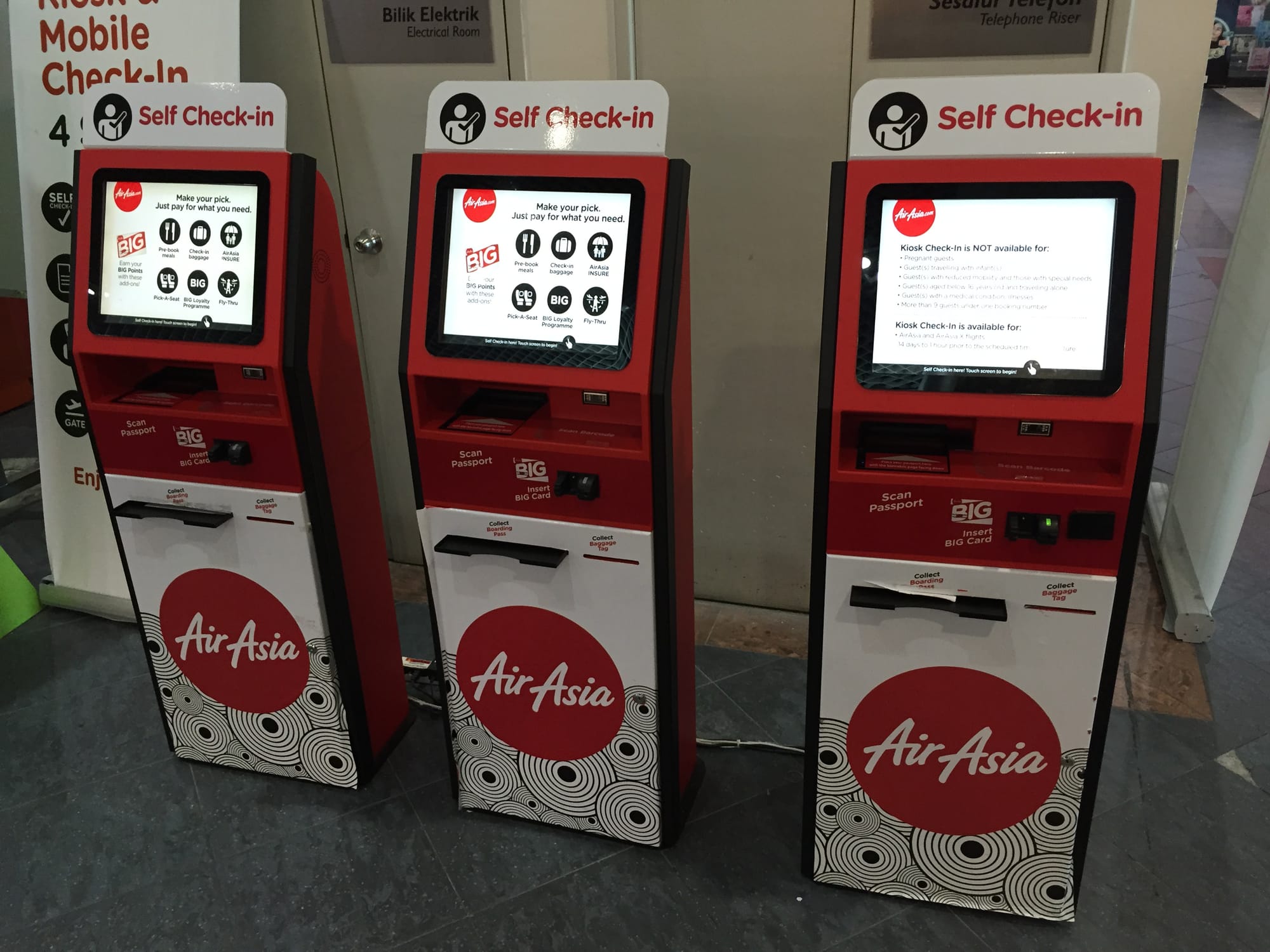
When I got to the airport, I went to a self-service check-in machine (see above photo) to print my baggage labels. But, no matter which bar code I scanned, 2D or the PDF, the machine would not recognise it. To get the baggage labels, I had to find my booking ID and use that. So, why did the machine ask for barcodes? Even the Air Asia staff at the machines couldn't help and couldn't get the machine to scan the barcodes on my phone.
My documents (PDF and 2D barcode) were not valid for flying, so I had to queue up to get a printed version.
This begs the question: Why was Air Asia sending a 2D barcode if you can't use it? Why did I waste my time checking in online?
You are better off waiting until you get to the airport to check in.
My guess was that it was an IT systems failure. In its rush to save money, the airline had not thought through the process. And the result was a degraded passenger experience.
I later discovered a trick to getting the bar codes to work. If you turned your phone's screen brightness to maximum, the check-in machine could read it. It was a shame that the staff on the machines did not know this trick. Or that it was not written on the machine as general advice.
Kuala Lumpur International Airport 2 (KLIA2) — looking for the Plaza Premium Lounge
I arrived at Kuala Lumpur International Airport 2 (KLIA2) and looked for my 'nap' room at the Plaza Premium Lounge.
KLIA2 was an odd airport in March 2015 as it felt half-finished, yet there was no evidence of building work. There were many empty shops, so maybe that gave it the unfinished feel?
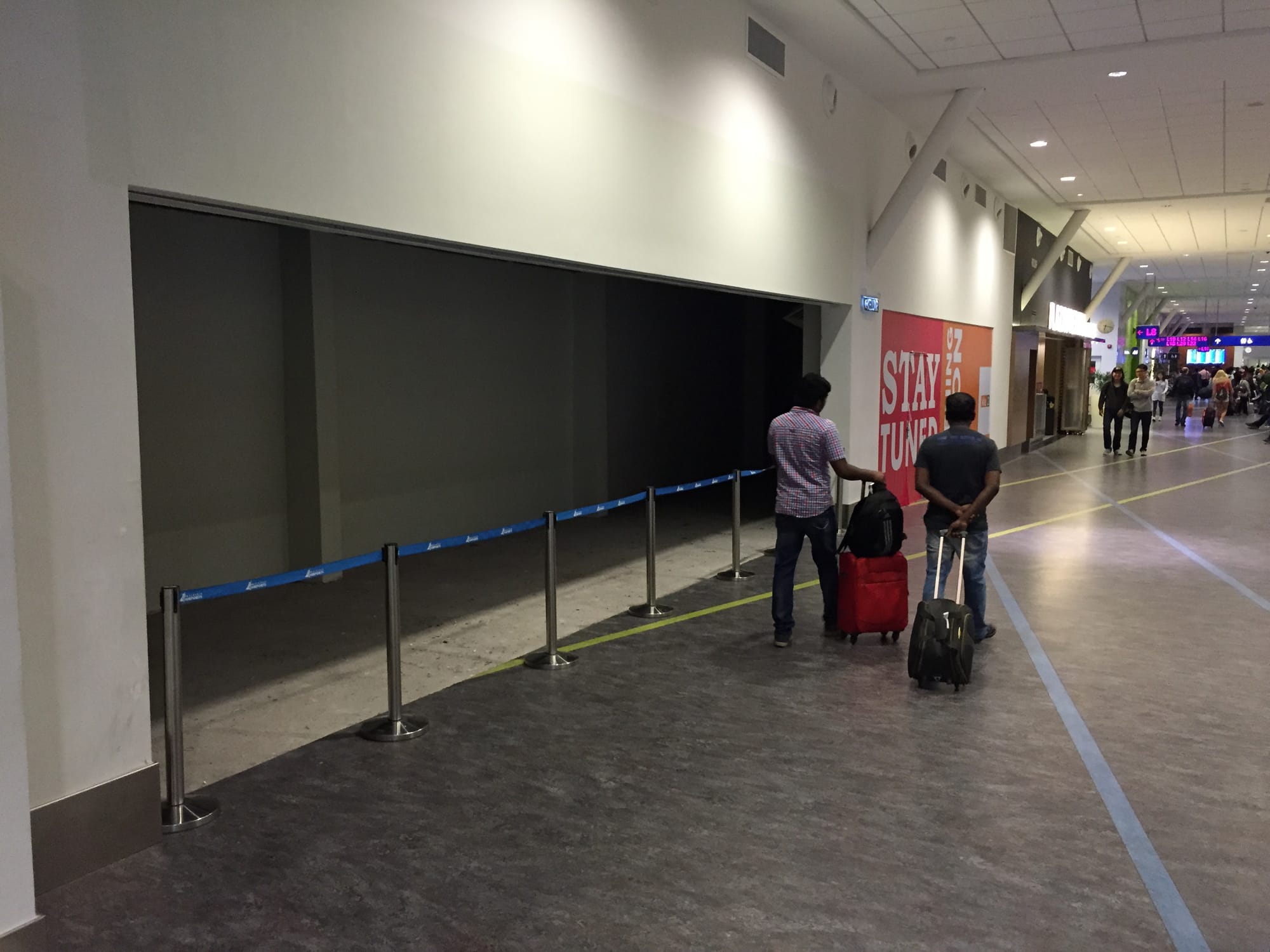
Finally, I found the Plaza Premium Lounge. It was beyond baggage claim — which makes sense — one floor up, tucked away in a corner. The signage to it was not great. The signs said level 2M, and then there was no further information.
There was one slight problem. The Plaza Premium Lounge at KLIA2 had no record of my reservation.
Plaza Premium Lounge at KLIA2
Finally, after a 20-minute delay, because the staff couldn't find my reservation, I got into my nap room. They never did find my reservation, and I had to produce a credit card to secure the room.
The room was small, very small.
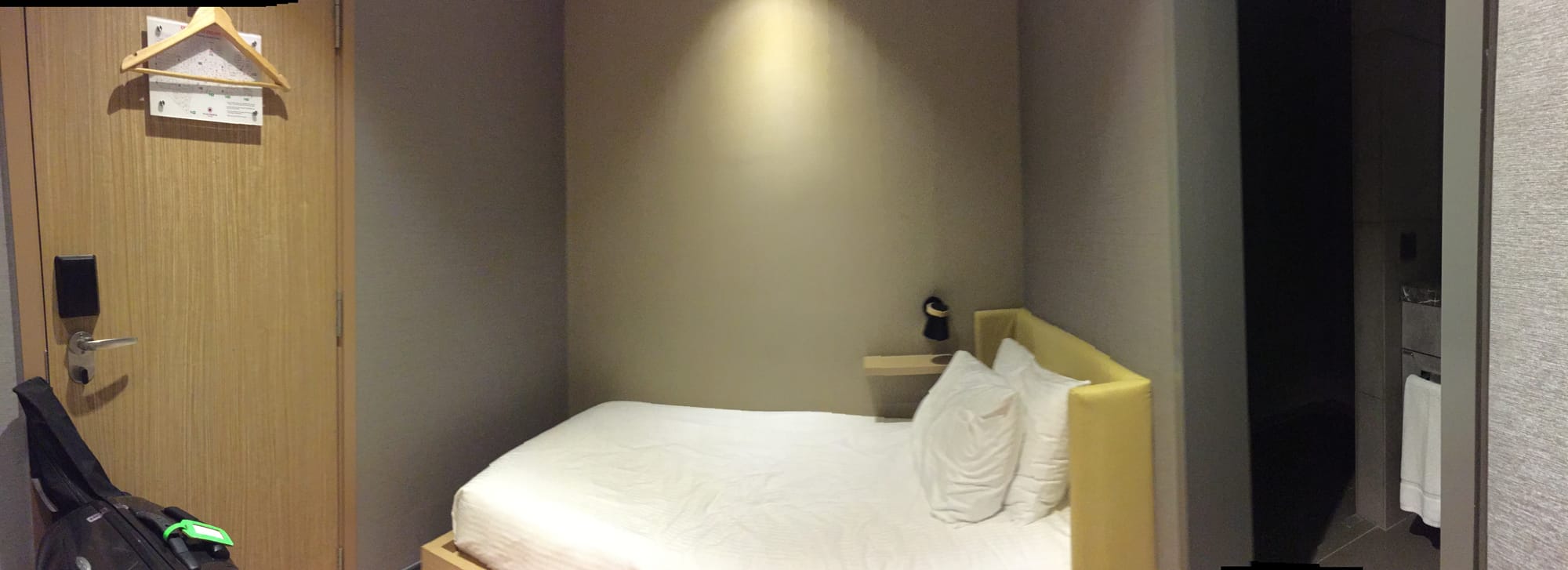
To get a shot of the room, I had to take a panorama; hence the very short-looking bed — the bed was a normal-sized single.
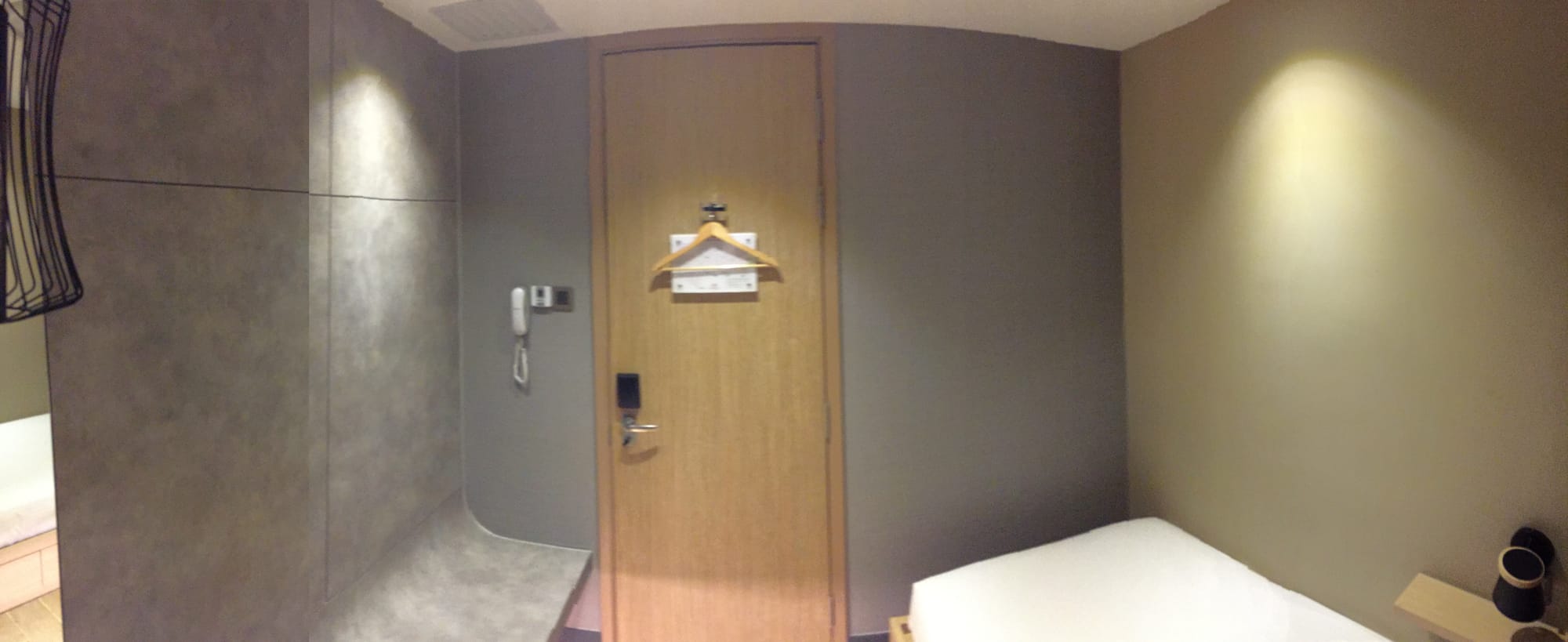
Even with such a small room, it had everything I needed — a bed and a bathroom. The room seemed perfect — sadly, it wasn't.
Problems with the room
The size of the room wasn't an issue. I have often wondered why most hotels have such big rooms. The problem was the bed and the noise.
The noise
I can't recall ever staying in such a noisy room. The closest I can think of would be a cabin I had on an overnight ferry across the North Sea (UK).
In the Plaza Premium Lounge, it was the air conditioner and air handling plant that was noisy. It sounded like I was sleeping in a wind tunnel. It was loud. Plus, the sound kept changing with various hums and rattles added, and those changes kept waking me up. Plus, there was no way to turn it off. Around 2 am, I discovered that I could stop the whistling noises by opening my bathroom door.
Another 'sound problem' were the other guests.
The Plaza Premium Lounge is for airport travellers. So room doors were opening and closing all night, and they were big heavy doors. And there was the sound of their luggage wheeled down the corridors. All very noisy.
I am not a light sleeper and can generally fall asleep anywhere. I have slept on trains, planes, ships, in meetings, and cars. But in this room, it was impossible to get to sleep, and it was not only the noise that was an issue; the bed wasn’t great.
The bed
It was a good quality mattress (Slumberland). But the hard base below the mattress (i.e., a lack of a box spring) made it feel hard. Plus, the fitted mattress protector made the bed very 'hot’. There was no body heat dissipation at the point of contact between the sleeper and the bed. The bed felt hot and uncomfortable, even with no covers.
An additional problem with the bed was positioning a small shelf. The location of the shelf meant it connected with my hands, arms, elbows, and, on one occasion, the side of my head. Ouch!
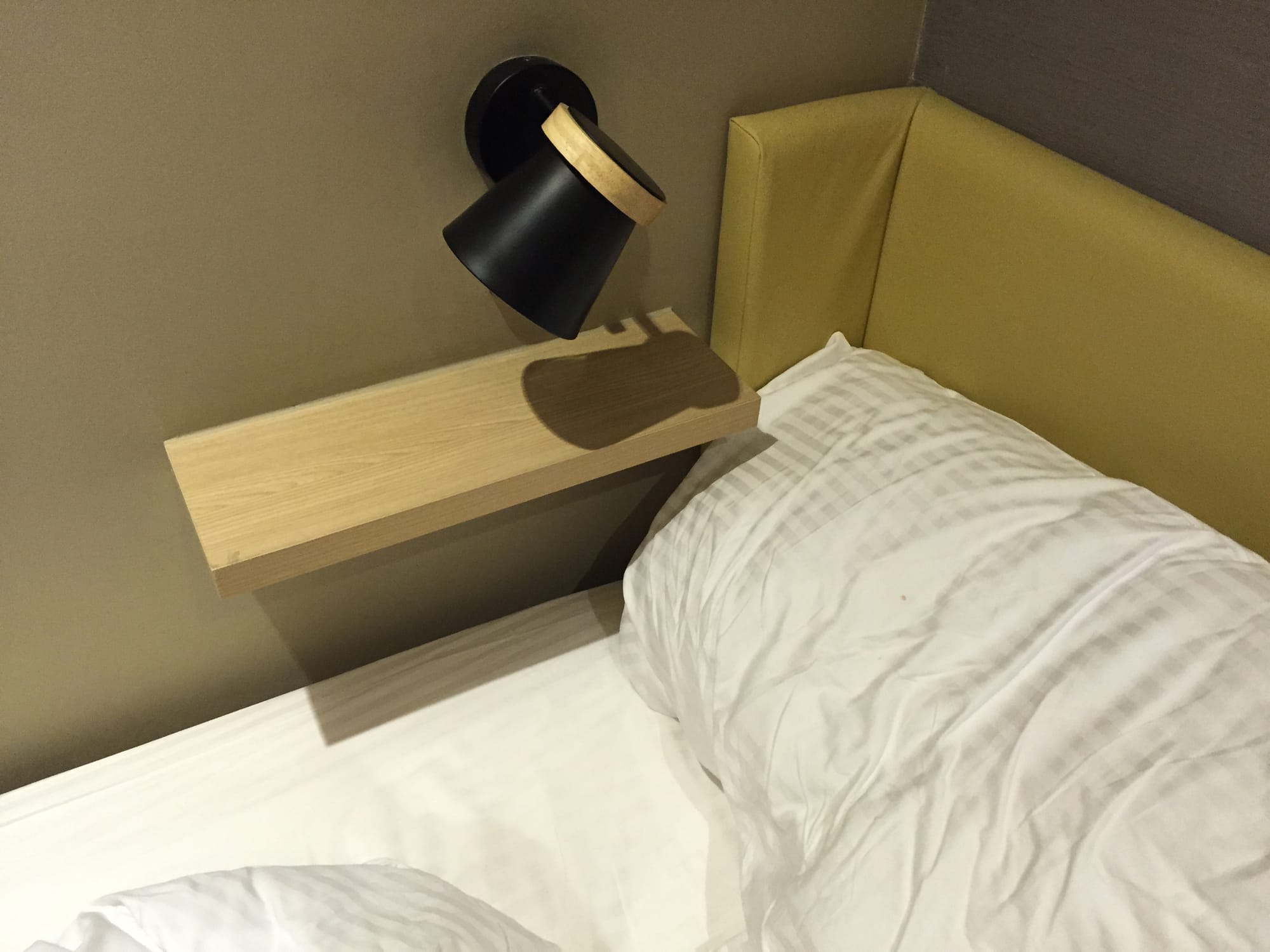
No sleep
The combination of the noisy air handling unit and fellow guests, the hot mattress, and the banging of body parts on the shelf meant I didn't sleep. Not good.
The good
One good point about the room was the rainfall shower. The shower was fantastic and changed what could have been a horrible stay into a bad experience. Another plus was the location. The hotel was in the airport, and I was at the check-in desk within 10 minutes of leaving my room.
Summary
This was the first time I had stayed in a 'nap' room.
The idea is good, i.e., a room where weary travellers can have a short stay and refresh themselves. And it was convenient for the airport if you had an early check-in. Unfortunately, the concept was poorly executed in the case of Plaza Premium Lounges. They should look at the Premier Inn at Gatwick Airport, UK, to see how an airport hotel can be done.
Finally, as if to prove the point about my sleeping abilities, I had a pretty good 90-minute nap on a plane. And yet, I couldn’t get to sleep at the Plaza Premium Lounge at KLIA2.
KLIA2 Departure Hall — early morning, and an Air Asia check-in
It was far too early to be up, particularly after a night of no sleep at the Plaza Premium Lounge nap room at KLIA2.
One bonus to being up early was a chance to wander through KLIA2 Departure Hall and watch the airport starting a new day.
Despite the early hour, the place was heaving with passengers checking in, and as ever, there were passengers dotted around the terminal trying to sleep.
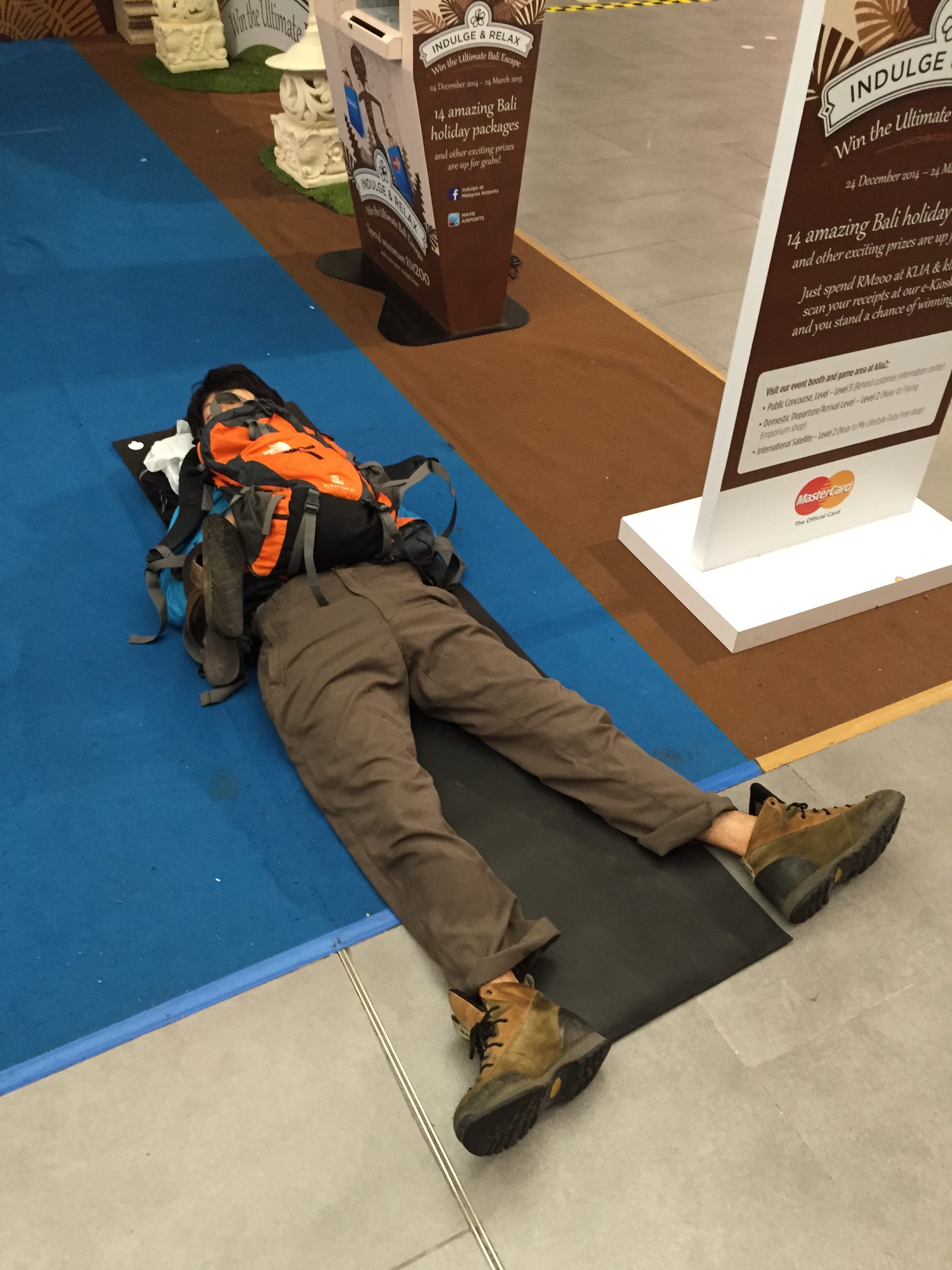
I particularly admired the passenger in the above photo as they were sleeping in the middle of the departure hall and had not tucked themselves away in a corner like the other passengers.
The Air Asia check-in was painless, apart from some confusion over baggage tickets. At KLIA2, they still printed them for you at the check-in desk and not at the machines.
One good bit of news was that turning the phone screen’s brightness to the maximum at the check-in machine worked. I had no problem scanning the 2D barcode.
Next stop, Myanmar.
